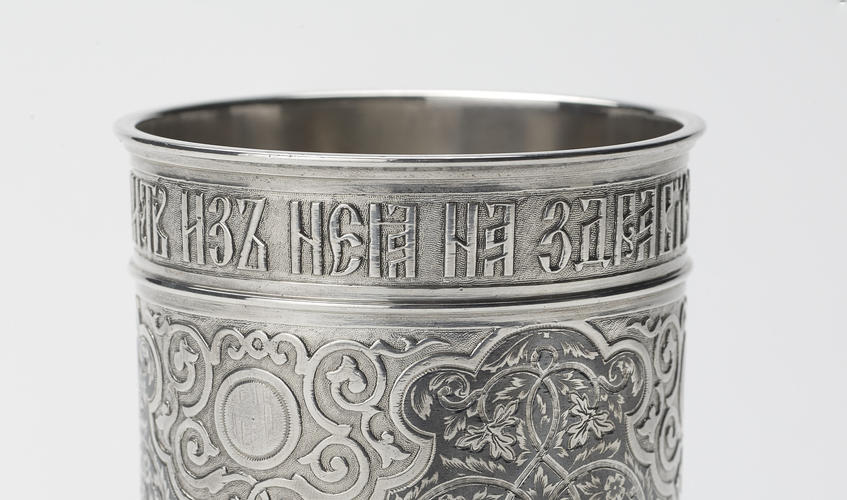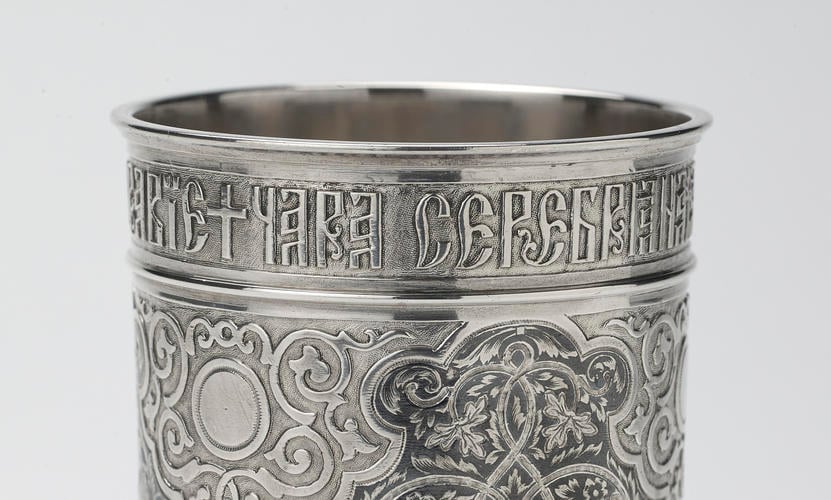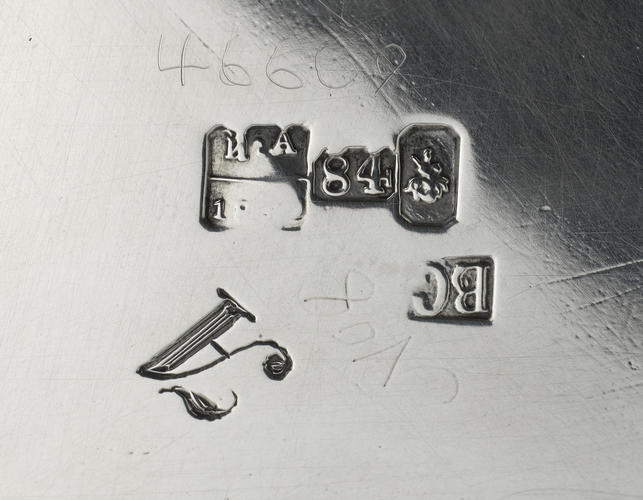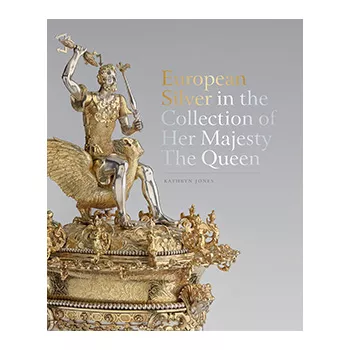Beaker 1879
Silver and niello, gilt interior | 9.0 x 7.5 x 7.8 cm (whole object) | RCIN 46609
-
A silver beaker on three ball feet, of heavy gauge metal; the rim marked with an inscription on a matted ground, the nielloed body decorated with scrolls, foliage and small flowers and reserves with scrolls, on a matted ground.
The technique of using niello on silver was known in parts of southern Russia from the 10th century, when it was practised in Kiev. The technique was likely to have derived from Byzantium and consisted of creating an alloy of sulphur and other metals to create a black substance which could then be rubbed into an engraved silver surface to create a dark background to the design and give it greater definition. By the twelfth century the technique had spread to the more northern areas of Russia although it grew slowly. In the 1660s Turkish silversmiths from Constantinople travelled to the workshops of the Kremlin armoury to teach niello techniques to the Russians and by the end of the 17th century it had become part of a distinctive national style, although it was mainly practised in Moscow rather than St Petersburg which sought out more western techniques. Some of the patterns traditionally used with niello were derived from Islamic patterns – scrolling vine tendrils being a common motif.
Struck with city mark of Moscow (1879), assayer's mark of Ivan Alexeyev (active 1876-1912), fineness mark (84 zolotniki), and maker's mark of Vasili Semyonov; engraved on base with A monogram; the rim with an applied inscription in Russian, 'A fine silver cup with which to toast good health'.Provenance
Possibly a gift to Queen Alexandra, as it is engraved with an A monogram on its base. Listed in a 1904 inventory of silver (KGV 1904) as having 'belonged to King Edward VII'.
Vasili Semonov inherited the Moscow workshop of his father in 1865, and exhibited at the All-Russian exhibitions of 1867 and 1882. The form of this beaker copies almost exactly the beakers produced by the firm of Sazikov, goldsmith to the Imperial court, with the Cyrillic inscription around the rim, the engraved cartouche plaques which descend from the rim towards the ball feet of the beaker, and the design of vine scrolls against a niello ground. -
Creator(s)
(silversmith)(nationality)Acquirer(s)
-
Medium and techniques
Silver and niello, gilt interior
Measurements
9.0 x 7.5 x 7.8 cm (whole object)
220 g (Weight) (whole object)
Place of Production
Moscow [Russia]
















